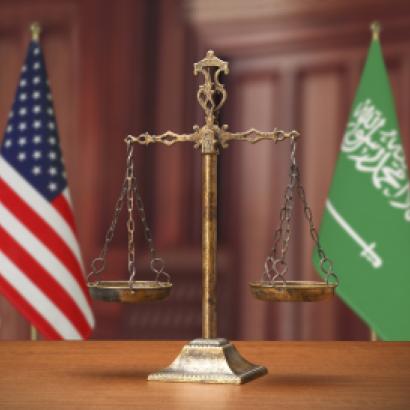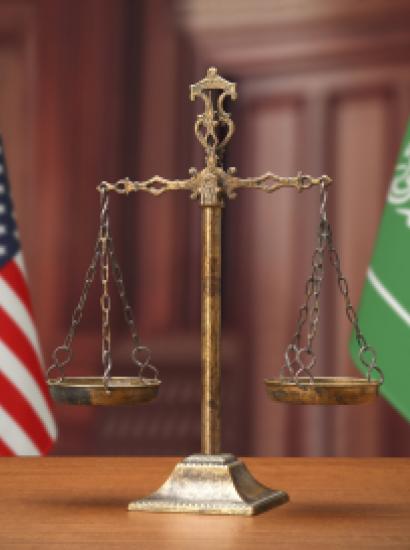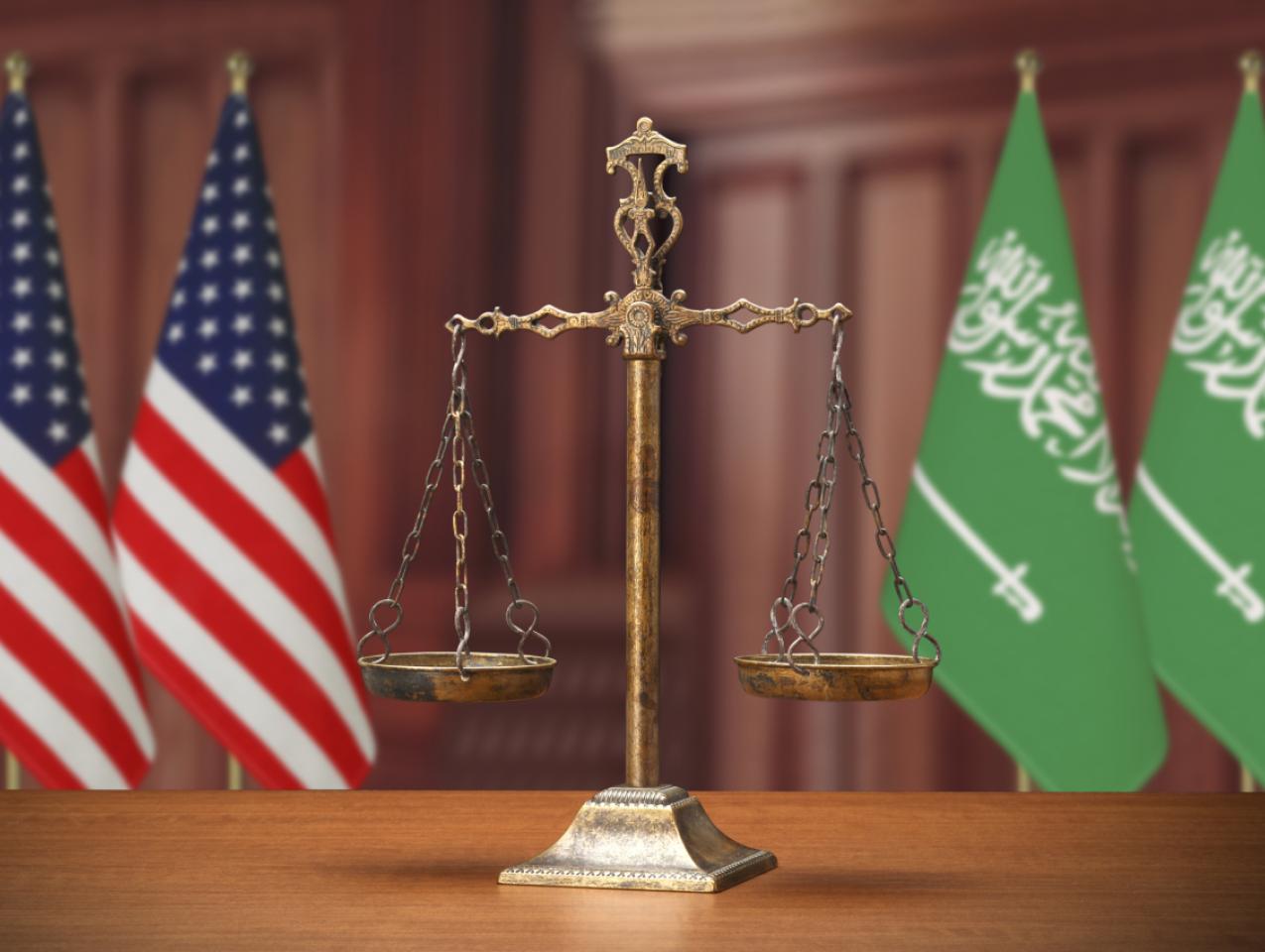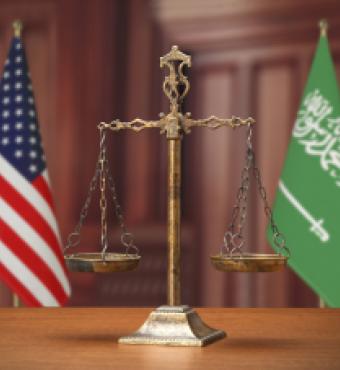- International Affairs
- Key Countries / Regions
- Middle East
The inability of the United States, in cooperation with like-minded nations, to implement a consistent policy toward the greater Middle East and North Africa region (spanning Morocco in the west to Iran in the east and encompassing the northern countries of Syria and Iraq to the southern countries of Sudan and Yemen) has contributed to the extent of the region’s unravelling, diminishing American influence there. Taken together, the policies of recent administrations were consistent with America’s tendency since World War II to engage the Middle East episodically, pursuing short-term solutions to long term problems. But since 2003, many Americans have become frustrated with long, costly, and inconclusive wars and now view the region as a mess to be avoided. But disengagement from the Middle East would make a bad situation worse, with negative implications for Americans as well as the peoples of the region. It is time for a reappraisal of what is at stake in the region as the basis for creating realistic objectives. Whatever administration charts the future course of U.S. Middle East policy, the President and cabinet officials will have to make the case to the American people as to why the region matters to them and how it is possible to make progress towards those objectives at an acceptable cost.
***
The Middle East matters to American security and prosperity. Many who advocate for disengagement from the region argue that the Middle East is no longer important because the United States has become the world’s largest oil producer and a net energy exporter. But world economic growth still remains dependent on the free flow of oil through the Strait of Hormuz just as it did during the oil embargo and crisis of 1973 and the “tanker wars” of the 1980s. Others argue that disengagement from the Middle East is necessary so the United States can focus resources on great power competition with China and Russia. But the Middle East is an arena for competitions involving not only those powers, but also rogue regimes and jihadist terrorist organizations; those competitions converge and interact in a way that threatens America’s security and the security of its friends in the region and in Europe. For example, Russia and Iran aid, abet, and sustain the murderous Assad regime in Syria. Russia has used the crisis in the region as a way to sow division in Europe and to present itself as an indispensable power broker that can ameliorate problems that it is in fact helping to create. Russia’s role in Libya may be even more dangerous as it expands its zone of influence in the Mediterranean, coordinates with Egypt and UAE to support the rebel army of Khalifa Hafter against the Government of National Accord, and plans to emplace advanced anti-ship and anti-aircraft missiles and radars in Benghazi. Iran, too, has taken advantage of regional chaos by increasing its political and economic influence in Lebanon, Syria and Iraq; reinforcing Hezbollah in Lebanon with precision-guided rockets to threaten Israel; enabling its proxies in Yemen to launch missiles into Saudi Arabia and United Arab Emirates as well as gain control of strategic terrain astride the Bab al Mandeb strait.
Some argue that disengagement from the Middle East would be inconsequential because jihadist terrorist organizations based there do not pose an existential threat to the United States. But control of territory in the Middle East and Central Asia, along with the historical “Khorasan” region (which comprised what is now northeastern Iran, southern Turkmenistan, and most of Afghanistan), is foundational to jihadist terrorists’ physical as well as psychological and ideological strength. Jihadist terrorist groups have yet to be defeated, rivals seek to displace U.S. influence in the region, and American security and prosperity there are still threatened. Is, then, sustained American diplomatic and military engagement in the region worth the costs and sacrifices?
As frustrating as the American experience in the Middle East has been since the invasion of Iraq in 2003, U.S. engagement there is worth the cost for two fundamental reasons. First, problems in the region do not remain confined to the region. Jihadist terrorist organizations are more dangerous today than Al Qaeda was on September 10, 2001. The number of terrorist alumni from the conflicts of the early twenty-first century is orders of magnitude larger than the mujahedeen alumni from the Afghan resistance to Soviet occupation who later joined Al-Qaeda. The reach of terrorist organizations is growing; ISIS attracted more than 30,000 fighters, not only from the Middle East and the greater Arab world, but also from EU nations, the United States, Canada, and Australia. Within two years following its formation in Syria and Iraq, ISIS spawned franchise organizations from Algeria to Nigeria to Yemen to Somalia and even the Philippines. The qualitative dimension of the threat is also growing as terrorists continue to pursue the most destructive and heinous weapons on earth. Terrorists’ most powerful weapon may be the computer, camera, and communications device that every one of them carries in his or her pocket. Encrypted communications improve terrorists’ ability to evade intelligence collection and coordinate their actions. Twenty-first century terrorists produce and distribute propaganda to lure susceptible young people to their wicked cause. It is vital to defeat terrorist organizations that pose an unacceptable threat to the United States, and the cost of those efforts is sustainable, particularly as U.S. partners in the region continue to bear the brunt of counter-terrorism intelligence, military and law enforcement efforts.
Second, the cost of inaction in the region is often higher than the cost of action. Those who criticize the George W. Bush administration’s 2003 invasion of Iraq as unwise often overlook the consequences of the Obama Administration’s withdrawal from Iraq and disengagement from the Middle East. After Vice President Joe Biden called President Barack Obama from Baghdad in December 2011 to express appreciation for allowing him to “end this goddamn war,” the sectarian civil war in the region intensified in a way that empowered ISIS and Iran, leaving the former in control of territory the size of Great Britain and the latter with unprecedented sway over Baghdad, a land bridge to the Mediterranean and a direct supply route to a proxy army on Israel’s border. Preventing the establishment of ISIS’s caliphate with active diplomacy and a modest military effort in Iraq would have cost far less than the five-year-long campaign to regain control of the territory they eventually seized. The consequences of short-term policies and the determination to disengage from the region were also apparent in Libya in 2011. In an effort to avoid what it perceived as the Bush Administration’s mistakes in Iraq, the Obama Administration surpassed them with a NATO air campaign that allowed rebels to depose Muammar Khadafy but made no attempt to shape the political environment in Libya following the dictator’s ignominious end. Nearly a decade later, the Libyan civil war rages on as that country remains both a source and transit point for millions seeking escape from turmoil in North Africa and the Sahel. The population of sub-Saharan Africa is set to double by 2050, and Libya is the key launch-pad to Greece, Italy and the rest of southern Europe. A multinational security force in Libya might have prevented the fragmentation of a formerly wealthy country that spans a wide geographic area but has a population of less than seven million people. In Syria, no-fly areas and safe zones such as those established for Iraq’s Kurds in the aftermath of the 1991 Gulf War might have mitigated the humanitarian crisis, stemmed the flow of refugees, constrained Iranian and Russian influence, impeded the growth of ISIS and other jihadist terrorist organizations, and put pressure on the Assad regime and its sponsors to seek a political resolution of the civil war. Instead, Syria devolved into the worst humanitarian crisis since World War II, generating a refugee crisis that has overburdened neighboring states of Lebanon, Jordan and Turkey and extended into Europe. The desire to disengage from the region drove the decision in 2013 not to enforce a previously-announced “red line” after the Assad regime used chemical weapons to murder nearly 1,400 people, including 426 children. Inaction removed remaining checks on the regime’s brutality and emboldened the Assad regime’s sponsors, Russia and Iran. In November 2019, a brutal Syrian offensive in Idlib Province generated another wave of over a million refugees, many of whom succumbed to extreme cold and then the COVID-19 virus. By 2020, more than one million refugees had made it to Europe’s shores or across its borders from Turkey. Syrian refugee populations reached 600,000 in Jordan, 900,000 in Lebanon and 3.6 million in Turkey. Between 2014 and 2018, approximately 18,000 refugees and migrants who, in desperation, trusted their lives to criminal traffickers, drowned in the Mediterranean Sea; almost a quarter of them were children.
U.S. policy must take into consideration the risks and costs of inaction as well as the costs of action. A multinational effort to limit the mass murder during the Syrian Civil War or to shape the political settlement in post-Khadafy Libya would have avoided much of the cost of relief for the over six million refugees displaced by those conflicts. There were political costs as well; debates over refugee policies in Europe increased the popular appeal of Euroskeptic nationalists and catalyzed the growth of polarizing populist movements.
***
A sustained and consistent policy toward the Middle East would permit the United States to galvanize the efforts of likeminded partners and to treat the cause, rather than the symptoms of sectarian violence that strengthens terrorist organizations, perpetuates state weakness, and inflicts human suffering on a colossal scale. A long term strategy to foster political accommodation among the region’s warring factions while isolating extremists should emphasize the integration of diplomatic, military, and development efforts in a way that is far more cost effective than the historical pattern of large scale intervention, disengagement, crisis, and response.
Long term, multi-lateral diplomatic engagement is necessary to strengthen groups that can contribute to enduring political settlements and isolating extremists from sources of support. The United States should support political accommodations across sectarian, ethic and tribal divides as well as efforts to combat extremist ideology and resist Iranian subversion. Assistance to law enforcement and efforts and programs to interdict terrorist financing will remain vital as well. There will be setbacks and frustrations. The halting progress and frequent disappointments in the Israeli-Palestinian peace process across the past three decades is a case in point.
Public diplomacy should expose Iran’s, Syria’s, and Russia’s role in perpetuating violence in the region and encourage others to impose costs on those governments as well as individuals and entities they employ. For example, other nations should reinforce American sanctions under 2020 Caesar Syria Civilian Protection Act, named after the brave photographer who provided photographic proof that the Assad regime was torturing and executing many thousands of Syrians in the regime’s prisons. Turkey warrants a special effort to draw the Turkish people’s attention to the fact that President Recep Tayyip Erdogan’s cooperation with Russia and Iran was never in their interest, a point punctuated in 2020 as Assad’s Russian-enabled forces killed thirty-four Turkish soldiers in a Russian air strike and as Turkish-supported and Russian-supported forces clashed in Libya.
A sustained military commitment in the region, far below the levels necessary to prosecute the war against ISIS, is essential for three reasons. The first is to support diplomatic efforts to resolve conflicts. For example, U.S. military cooperation with Iraqi forces to ensure the enduring defeat of ISIS helps counter Iranian influence over the Baghdad government. Similarly, U.S. cooperation with Syrian opposition forces in eastern Syria provides diplomats with leverage in the political process because they deny Assad, Russia and Iran the ability to profit from the oil reserves of the country they destroyed. Second, a U.S. presence in the Middle East is necessary to ensure that jihadist terrorists are unable to use the region as a base for attacks against the U.S. homeland, U.S. allies, or American citizens abroad. A small U.S. contingent enables cooperation with partners to combat terrorists and to counter Iran’s use of proxy warfare to destabilize the region, threaten Israel, and extend Iranian influence in strategic locations. Third, an ample U.S. presence serves to deter aggression that threatens U.S. and allies in the region. In particular, U.S. forces must be prepared to impose costs on Iran should its leaders intensify its four-decade-long proxy war to drive the United States out of the region, threaten Israel, and keep the Arab world in perpetual conflict.
Development efforts should encourage long term reforms in the areas of governance, education, and economic policy. The problem set in the Middle East is, in large measure, the result of the serial failures of colonial rule, post-colonial monarchies, Arab nationalism, socialist dictatorships, and Islamist extremism. Decades of conflict fragmented societies along ethnic, sectarian, and tribal lines and perpetuated competitions for power, resources, and survival. Programs and efforts, of course, should be grounded in nineteenth century philosopher John Stuart Mill’s observation that the virtues needed for maintaining freedom must be cultivated by the people themselves. The people of the region, however, are demanding reform. In 2019 and 2020, major protests broke out in Algiers, Beirut, Khartoum, Baghdad, Damascus and Tehran, forcing the resignations of Lebanese Prime Minister Saad Hariri and Iraqi Prime Minister Adel Abdul Mahdi. Protestors in Iran voiced their displeasure with Supreme Leader Ayatollah Ali Khamenei and his costly proxy wars shouting “death to the dictator” and “no Gaza, no Lebanon.” Governments responsive to the demands of their people are able to counter corruption and organized crime and remove significant barriers to the educational reform and economic growth that is necessary to recover from the Covid-19 recession and to provide jobs in the region that for the past 25 years has had the world’s highest youth unemployment rate. Even with U.S. and multinational support, it is unclear whether the protests will lead to better governance or economic reform, or whether they will result in further disappointment such as the world is witnessing with the utter collapse of governance in Lebanon. It is clear, however, that absent sustained U.S. and multinational support, the chances of improved governance are greatly diminished.
There are no short-term solutions to the Middle East’s long-term problems. Progress in breaking the cycle of sectarian violence and overcoming the region’s problems will be slow and uneven. Future U.S. administrations will face disappointments and setbacks. But disengagement from the Middle East’s challenges will incur a much greater cost and risk than sustained engagement aimed at preventing the region’s many crises from worsening in the near term, and assisting the people of the region with the governance, economic, and educational reforms necessary to address the causes of violence and instability in the long term.
H.R. McMaster is the Fouad and Michelle Ajami Senior Fellow at the Hoover Institution. He is author of Battlegrounds: The Fight to Defend the Free World.
















